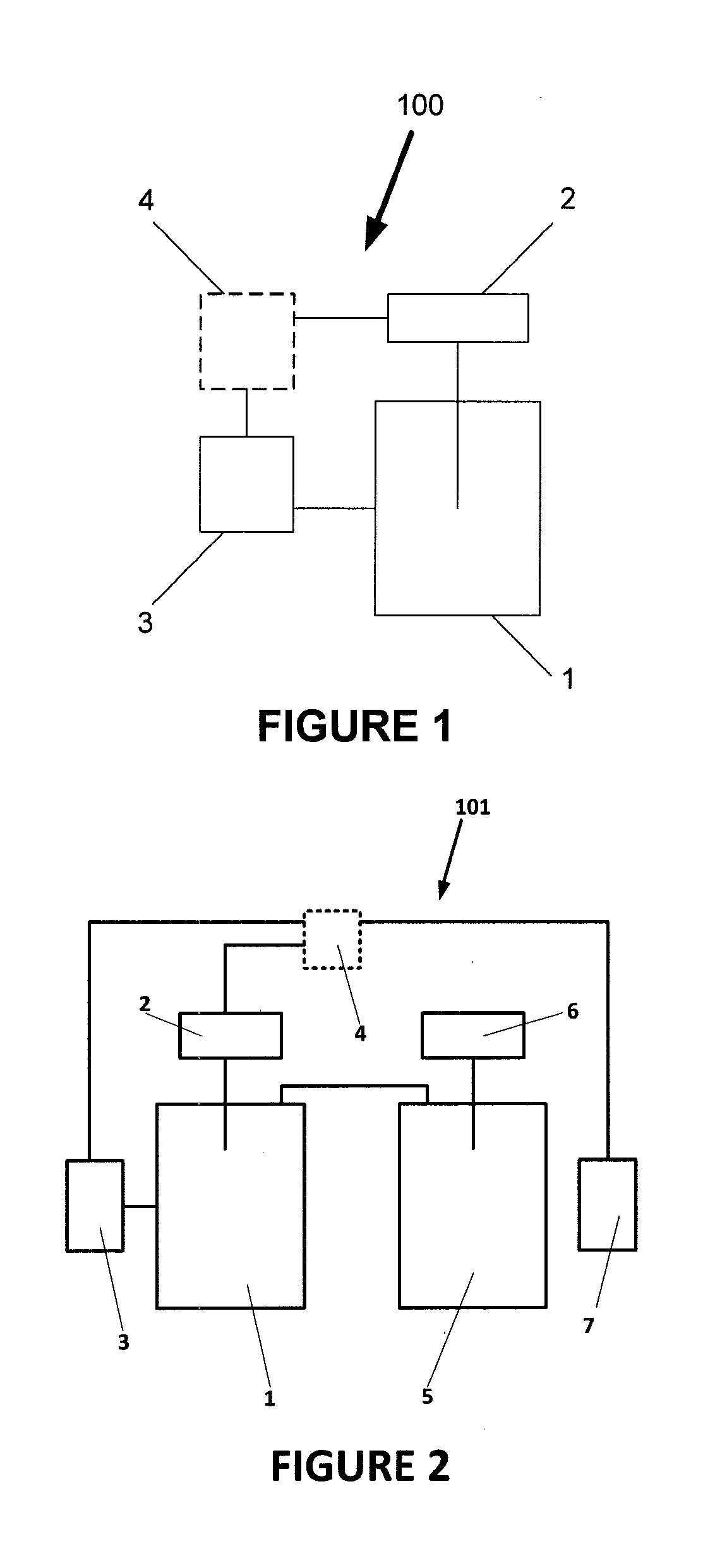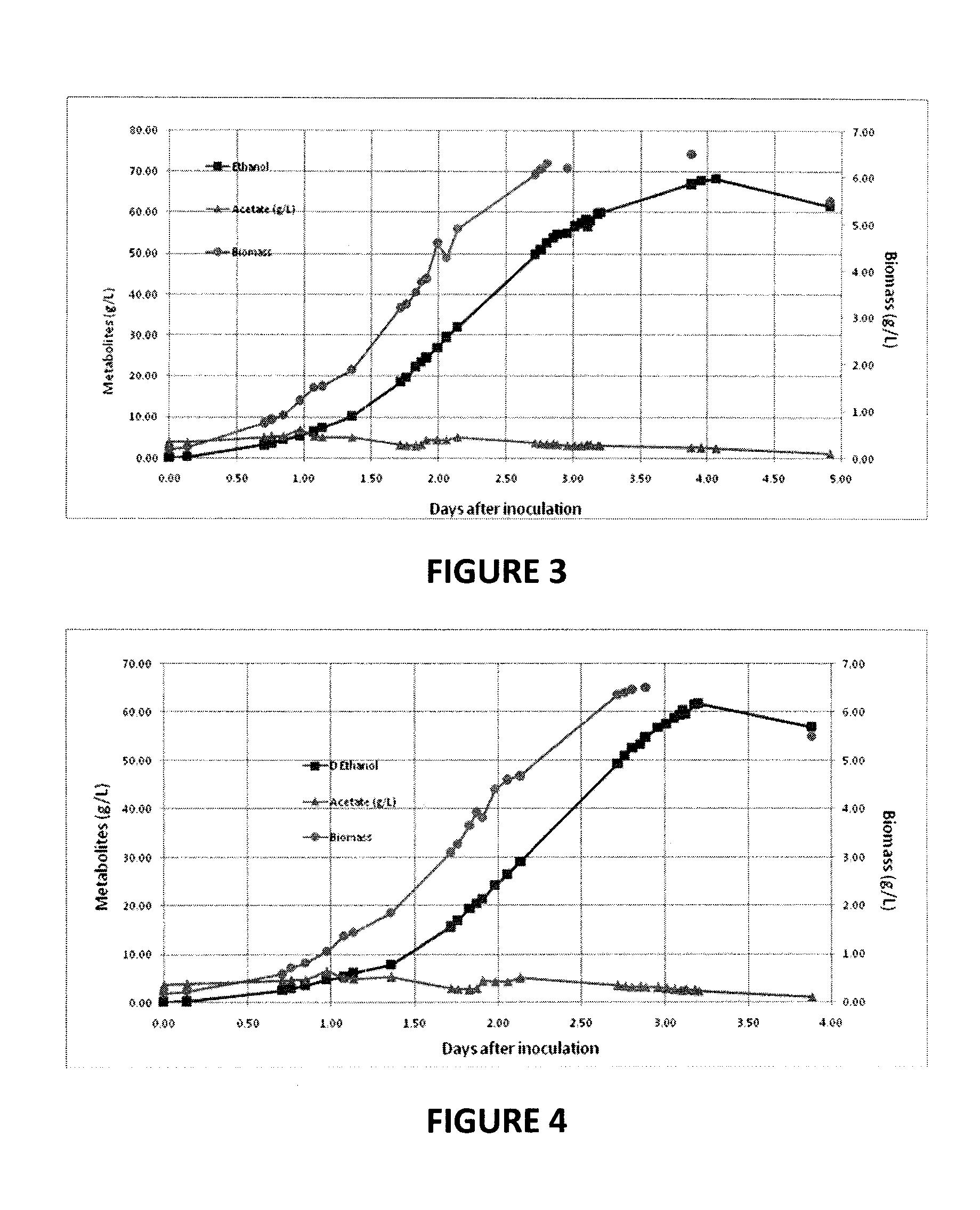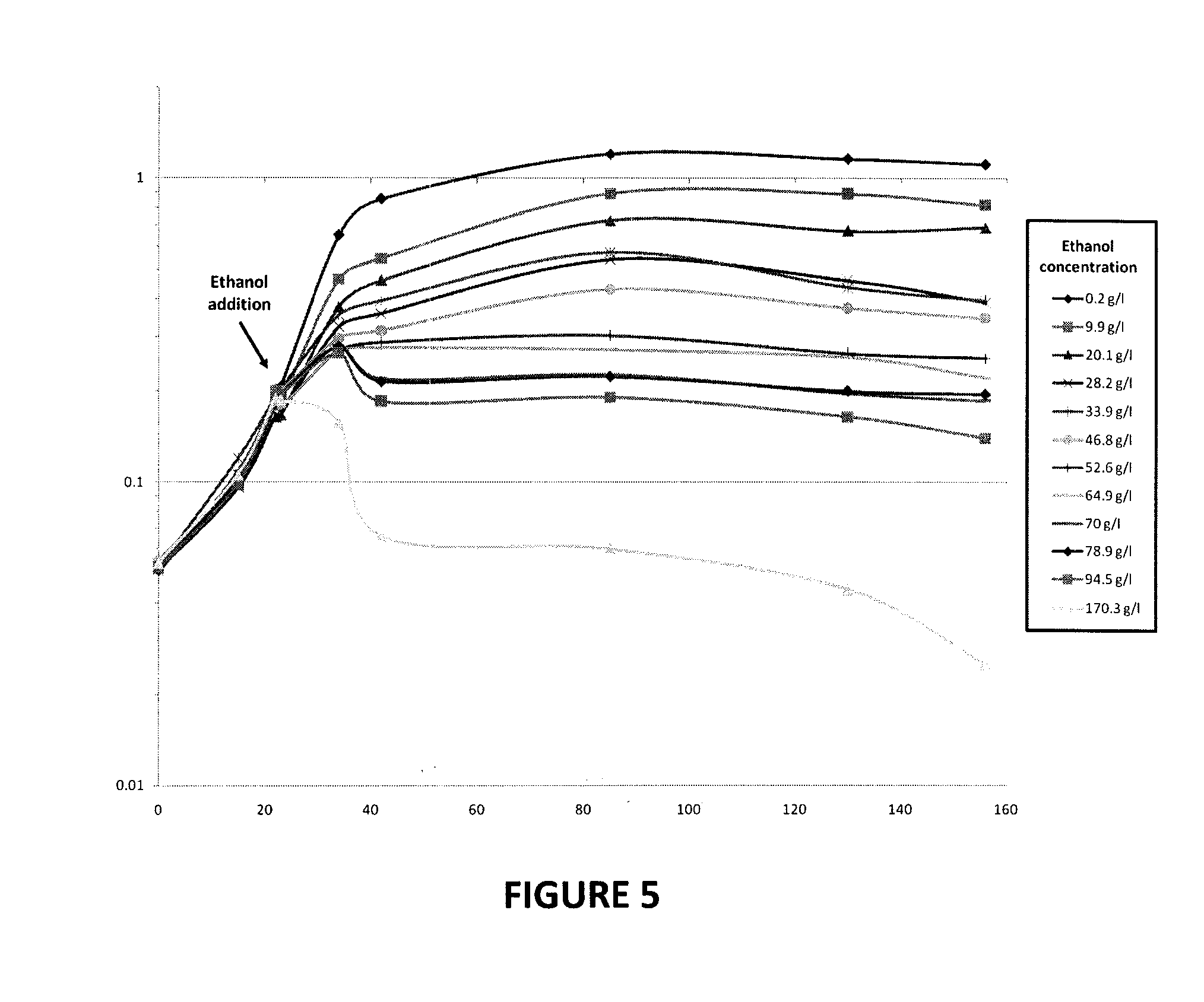Alcohol production process
a technology of alcohol production and fermentation process, applied in the field of methods for producing products, can solve the problems of affecting the cost of these carbohydrate feed stocks, the efficiency of ethanol production using such fermentation process may be less than desirable, and the cultivation of starch or sucrose-producing crops for ethanol production is not economically sustainable in all geographies, so as to reduce the effects of alcohol toxicity, slow down the growth and metabolite production, and reduce the effect of alcohol toxicity
- Summary
- Abstract
- Description
- Claims
- Application Information
AI Technical Summary
Benefits of technology
Problems solved by technology
Method used
Image
Examples
example 1
Batch Fermentation in CSTR
[0111]
Solution ANH4Ac3.083gKCl0.15gMgC12•6H2O0.61gNaCl0.12gCaCl2•2H2O0.294gDistilled WaterUp to 1 LSolution(s) BComponentmol / L H2OComponentmol / L H2OFeCl30.1Na2MoO40.01CoCl20.05ZnCl20.01NiCl20.05MnCl20.01H3BO30.01Nitrilotrifluoroacetic acid0.3Na2SeO30.01Solution CBiotin20.0 mgCalcium D-(*)-50.0 mgFolic acid20.0 mgpantothenatePyridoxine•HCl10.0 mgVitamin B1250.0 mgThiamine•HCl50.0 mgp-Aminobenzoic acid50.0 mgRiboflavin50.0 mgThioctic acid50.0 mgNicotinic acid50.0 mgDistilled waterTo 1 Litre
Preparation of Cr (II) Solution
[0112]A 1 L three necked flask was fitted with a gas tight inlet and outlet to allow working under inert gas and subsequent transfer of the desired product into a suitable storage flask. The flask was charged with CrCl3.6H2O (40 g, 0.15 mol), zinc granules [20 mesh] (18.3 g, 0.28 mol), mercury (13.55 g, 1 mL, 0.0676 mol) and 500 mL of distilled water. Following flushing with N2 for one hour, the mixture was warmed to about 80° C. to initiate t...
example 2
[0121]The ethanol tolerance of Clostridium autoethanogenum DSM23693 was tested in serum bottles (FIG. 5). Ethanol was added in various concentrations to an active growing culture at 37° C. in PETC medium (Tab. 1) with 30 psi steel mill gas as substrate (approx 48% CO, 32% N2, 2% H2, and 18% CO2). Ethanol concentrations were confirmed by HPLC analysis using an Agilent 1100 Series HPLC system equipped with a RID operated at 35° C. (Refractive Index Detector) and an Alltech IOA-2000 Organic acid column (150×6.5 mm, particle size 5 μm) kept at 60° C. Slightly acidified water was used (0.005 M H2SO4) as mobile phase with a flow rate of 0.7 ml / min. To remove proteins and other cell residues, 400 μl samples were mixed with 100 μl of a 2% (w / v) 5-Sulfosalicylic acid and centrifuged at 14,000×g for 3 min to separate precipitated residues. 10 μl of the supernatant were then injected into the HPLC for analyses.
[0122]At the lowest alcohol concentration (0.2 g / L, wherein no additional ethanol wa...
PUM
 Login to View More
Login to View More Abstract
Description
Claims
Application Information
 Login to View More
Login to View More - R&D
- Intellectual Property
- Life Sciences
- Materials
- Tech Scout
- Unparalleled Data Quality
- Higher Quality Content
- 60% Fewer Hallucinations
Browse by: Latest US Patents, China's latest patents, Technical Efficacy Thesaurus, Application Domain, Technology Topic, Popular Technical Reports.
© 2025 PatSnap. All rights reserved.Legal|Privacy policy|Modern Slavery Act Transparency Statement|Sitemap|About US| Contact US: help@patsnap.com



